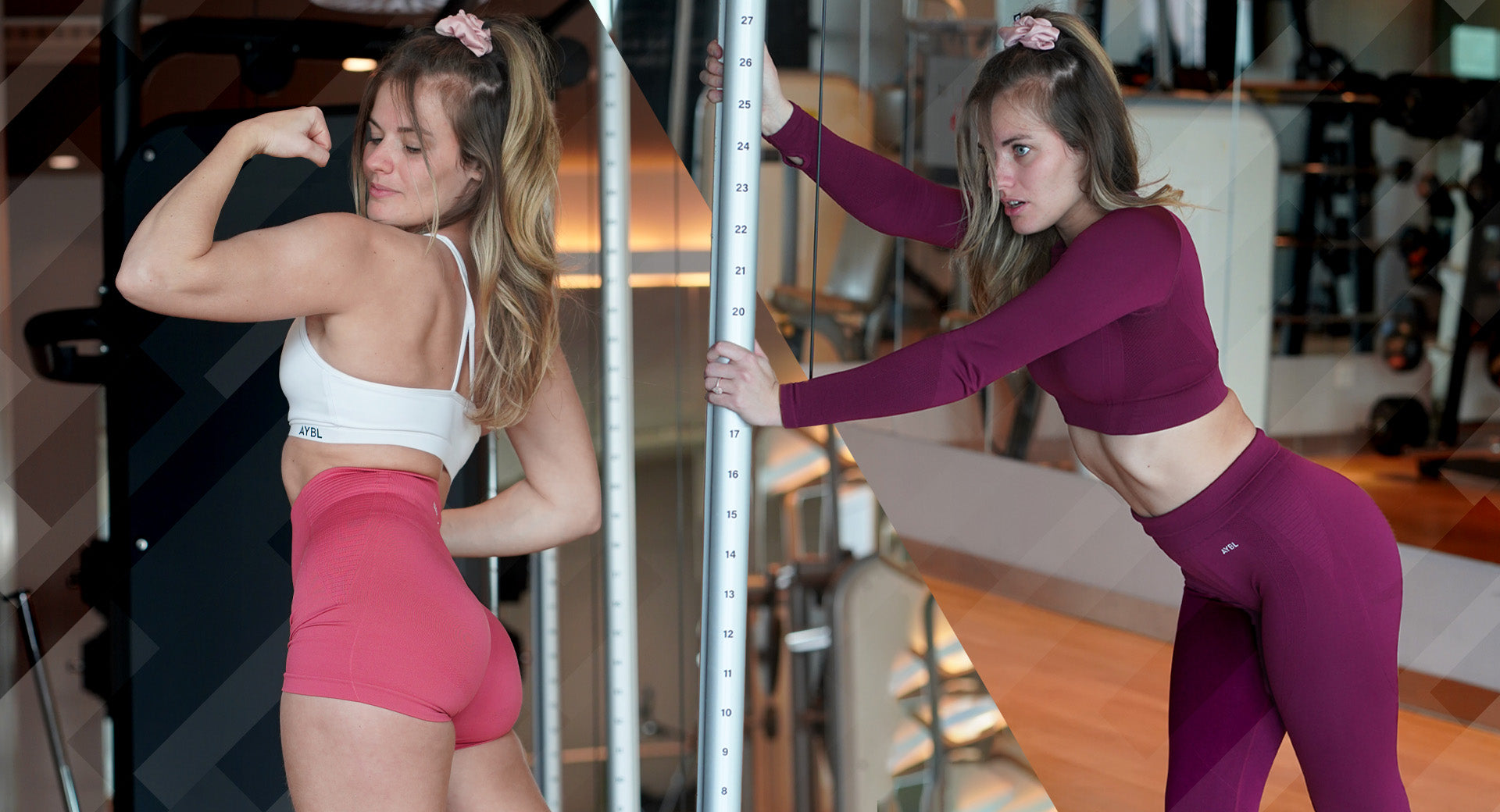
The Athlete Spotlight: Meet Caroline Gravity
It felt about time that we brought you a new edition of our Athlete Spotlight Series - and today, we’re catching up with none other than Caroline Gravity.
After admiring her ambition and can-do attitude for so long, we spent some time chatting with Caroline about her goals, her source of inspiration and also how fitness has shaped her into the person she is today.
HEY CAROLINE! TELL US A LITTLE BIT ABOUT YOUR FITNESS JOURNEY AND WHAT KICK STARTED YOUR LOVE FOR THE GYM?
From a very young age, sport has always played a huge part in my life. I used to do artistic gymnastics when I was younger until my 20s. My passion for gymnastics comes from my mum, who was my coach.
When I left France to move to London in 2015, I could no longer do gymnastics as much as I used to. I went from training five to six times per week to only once a week, so I needed to find something else to do.
A few months after I arrived in London, I met my partner, who I share the same love for sport with. He had a membership at a fitness club, and up until then, I’d never been to a gym before. I was scared and I didn’t know what to do. He brought me to show me the club and the equipment, and I fell in love with the gym vibes from day one.
WHAT ROLE HAS FITNESS PLAYED IN YOUR LIFE?
Fitness has played a different role at different stages of my life. When I started, fitness was a way to get involved in sport. Then, it became a way to help me to perform better at my sports, including gymnastics, partner acrobatics, pole dancing and Brazilian jiu-jitsu.
I now realise how fitness plays a huge role in my mental health. Fitness helps me so much in my daily life with how I feel about myself, my mind and my body. Fitness gives me confidence and self-love.

WHAT MADE YOU WANT TO SHARE YOUR FITNESS JOURNEY ON SOCIAL MEDIA?
I used to work as a gym manager for three years at four different gyms back in Australia. During this time, I had the chance to meet hundreds of amazing people. This experience made me realise that most beginners had the same problems, issues with exercise, bad form and anxiety about fitness.
I first decided to share my fitness knowledge, form tips, motivation and fitness journey on social media for my clients and friends. Then, my videos went viral, reaching millions of views from people all around the world. I’m so proud now to be able to help thousands of women around the world during their fitness journey.
READ MORE: The Principles Of Good Form With Caroline Gravity
WHAT’S YOUR FAVOURITE AYBL COLLECTION AND WHY?
My favourite AYBL Collection is Empower. I love the simplicity of the designs and all the colours available. I can choose a colour depending on my mood and the vibe for the day - I love it!
WHAT DO YOU ENJOY MOST ABOUT BEING AN AYBL ATHLETE?
I love being part of the AYBL Athlete Community. I like being part of a female community that empowers and motivates each other. It’s like being part of a fitness family.

WHAT GOAL OR GOALS ARE YOU CURRENTLY WORKING TOWARDS?
I’m currently working on my upper and lower body power strength to unlock a clean muscle-up and back flip.
I’m also working on my flexibility, including the splits and backbend, to unlock new back-bend movements on the pole.
To finish, I aim to work a lot on my cardio to improve my performance in Brazilian jiu-jitsu.
WHAT ARE THREE SIMPLE THINGS PEOPLE CAN DO TO STAY CONSISTENT?
Firstly, write down your short-, medium- and long-term goals and why it’s important for you to work towards those goals. This will be your motivation whenever you’re experiencing down days.
Next, make a plan of what you’re going to do to reach those goals. Having a daily and weekly routine will help you to stay consistent.
Finally, keep a record of your daily, weekly and monthly improvements to stay motivated. These could include weight-loss, muscle gain, unlocking a new exercise, a new PR, better overall mood, improved sleep or generally feeling better physically and mentally.
READ MORE: Find Your Motivation With Our Athletes
DO YOU HAVE A MESSAGE YOU’D LIKE TO SHARE WITH OUR FEMALE COMMUNITY?
Don’t be scared to be yourself! You are amazingly unique!
You can dream big and achieve whatever you want. Trust yourself, keep investing your time in yourself and keep working towards your goals!
You are worthy!

It’s clear there’s much more to Caroline than meets the eye. Yes, her fitness-tip videos are a Godsend, but it’s her motivation, determination and grit that will stick with us for many years to come.
Stay up to date with the latest from Caroline and support her on her journey over on TikTok and Instagram.
Want to get to know more of our AYBL Athlete family? Meet Gracie Collis.